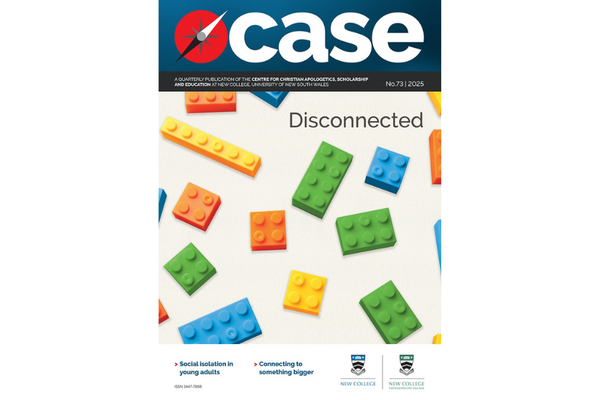Living with technology: Editorial

William L. Peirson
In many ways, this edition is a companion to Case #70, Progress. New technology is often associated with human progress, though of course, things are rarely this neat. New technologies solve problems and improve aspects of our lives but can have unintended consequences in others—consequences that may not show up for years or even decades. The impact of social media on youth mental health is one example of this, and the world is now scrambling to work out how to put the genie back in the bottle, or at least curtail its powers. Whether Australia’s newly minted legislation to ban access to under 16s can be made workable is yet to be seen.
Another technology that has had more profound social implications than were ever foreseen is reliable contraception. As promised, bioethicist Megan Best has written a detailed account of the ethics and implications of contraception for Christians, and for society in general.
Still another example is dam technology, which has been developed by engineers in response to our needs to conserve or redeploy water. This has proved successful in meeting these aims, but in the previous edition I wrote about a major ecological issue directly triggered by the construction of river barriers by civil engineers over the past century.
These examples highlight an important question: Who is responsible? My view is that my discipline (civil engineering) has been remiss in not adequately pursuing solutions to the problems it has created. When a bridge collapses, or an aeroplane falls out of the sky, we are quick to mount enquiries into who or what is to blame. Yet as technology becomes more sophisticated, the question of responsibility becomes more complex. Armies of computer scientists develop artificial intelligence systems, driverless cars and social media platforms. These developers are faceless yet flaws in their work can cause harm, even death.

How can responsible technologists do their best to ensure their creations will be fit for purpose, and mitigate the risk of negative consequences? How does knowing the plans and purposes of the God of the universe make a difference to their work? Two thought-provoking pieces in this edition address this. Michael McGarity guides us through the principles of developing good technology from the perspectives of technology creators and users, and A.J. Culp unpacks what the Pentateuch teaches about imaging God as artisans and craftspersons.
It can be easy to point the finger at the downsides of living in a technological age and forget the enormous advantages it brings. One of our regular Science and Technology columnists, Matthew Frazer, has put together his list of the top five technological innovations that have disrupted Christian thinking over the centuries, and the challenges these present. We also interview a family living day to day in dependence on medical technologies and hear how new developments provide very real improvements in quality of life.
We live with technology, but we do not live in a morally neutral world. How we create, use, and take responsibility for technology matters. The command of the Bible is that even the smallest things are to be done to the glory of God.
And whatever you do, whether in word or deed, do it all in the name of the Lord Jesus, giving thanks to God the Father through him. (Colossians 3:17)
Leave a comment
Comments will be approved before showing up.



